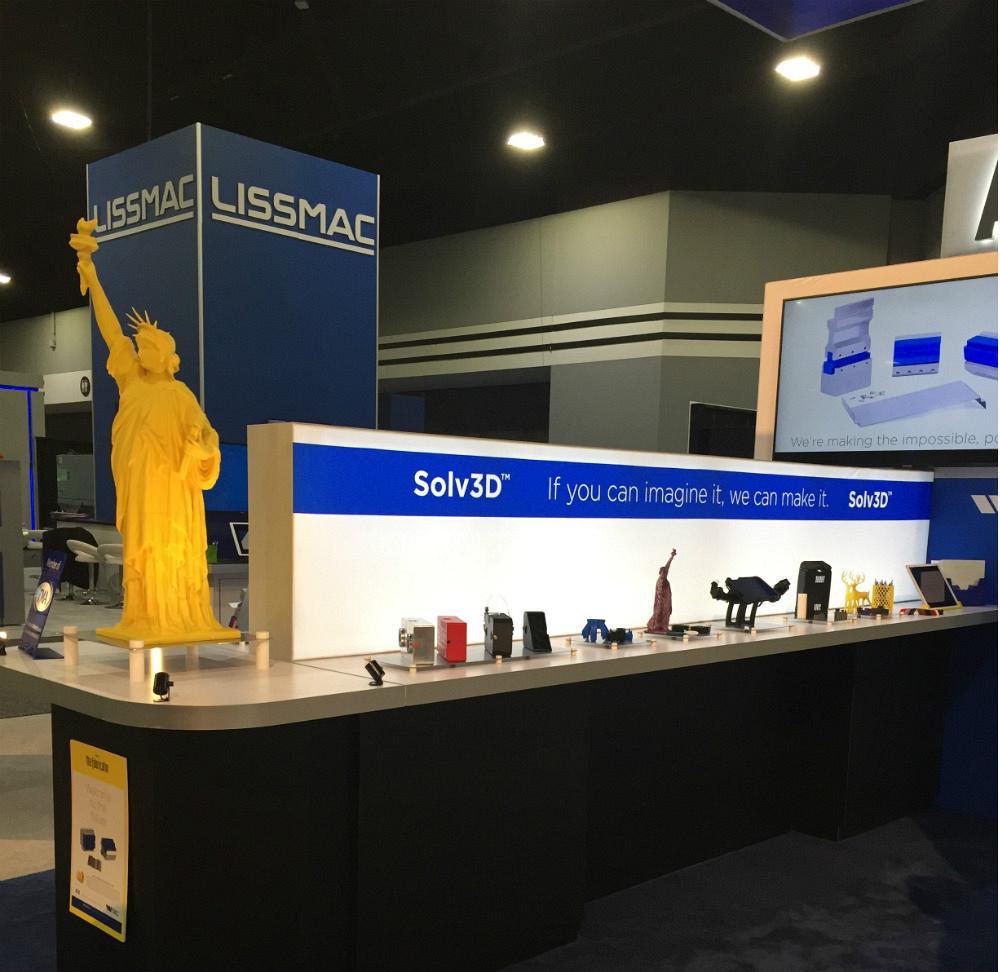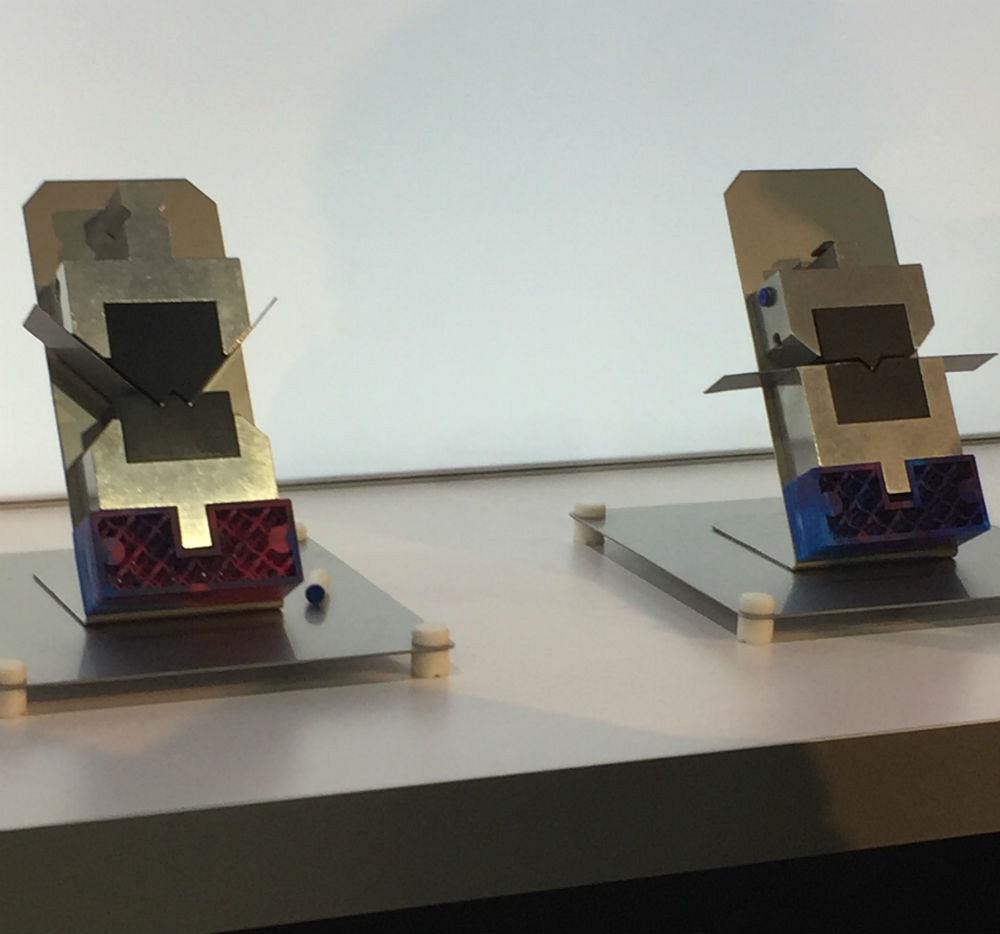- FMA
- The Fabricator
- FABTECH
- Canadian Metalworking
Categories
- Additive Manufacturing
- Aluminum Welding
- Arc Welding
- Assembly and Joining
- Automation and Robotics
- Bending and Forming
- Consumables
- Cutting and Weld Prep
- Electric Vehicles
- En Español
- Finishing
- Hydroforming
- Laser Cutting
- Laser Welding
- Machining
- Manufacturing Software
- Materials Handling
- Metals/Materials
- Oxyfuel Cutting
- Plasma Cutting
- Power Tools
- Punching and Other Holemaking
- Roll Forming
- Safety
- Sawing
- Shearing
- Shop Management
- Testing and Measuring
- Tube and Pipe Fabrication
- Tube and Pipe Production
- Waterjet Cutting
Industry Directory
Webcasts
Podcasts
FAB 40
Advertise
Subscribe
Account Login
Search
FABTECH® 2018 recap—Day 1
‘I could stay all week here’
- By Vicki Bell
- November 6, 2018
As I walked the FABTECH® show floor this Tuesday afternoon, I overheard one attendee tell another, “I could spend all week here, drinking beer, walking around, having a good time.” I have a slightly different perspective: I could spend all week here and never see the entire show. As an editor, I would like to visit as many booths as possible. However, that’s neither practical nor feasible. Most of an editor’s time is taken up with press conferences and booth appointments. The companies that extend invitations early have an edge when it comes to reserving time with an editor. It never fails to surprise me when companies wait until a few days before the show to send out a visit request.
My day began with an early morning visit with Wilson Tool International (B6251), a manufacturer of tooling systems for punch presses, press brakes, and punch and die components for the stamping and tableting industries. Editor-in-Chief Dan Davis and I met with the company’s representatives, Kelli Williams and Ann Beaupre, for a booth tour. In October, the company introduced a new division, Wilson Tool Additive™, and our tour began with an introduction to the Solv3D™ line of additively manufactured support parts that can replace end-use parts traditionally made from streel or plastic. The company makes these parts for use in its own machinery and also for its sheet metal customers.
Then there is the Bend3D™ line of additively manufactured bending tools that, according to the company, match the quality of traditional steel press brake tools. They also work as forming, air-bending, and mark-free bending tools.
The company also is showcasing its Corner Former, XSharp™ Grinder, Express Crowning™ System, Brake Partner™, Express Punch Clamp Plate, and tapping tools.
Next up was a stop at the Bystronic booth (B7229). Because of a prior commitment, I was unable to attend the company’s scheduled press conference, but I wanted to see what was new. Among the featured products is the next generation BySmart Fiber laser cutting machine designed to bridge performance with affordability.
Then it was on to lunch with Barnes MetalCrafters’ Tim and Nick Martin. Nick has been a guest blogger for thefabricator.com for several years. His posts focus on all aspects of life and work in a job shop, and many have been picked up for publication in The FABRICATOR® magazine.
The Wilson, N.C.-based shop is thriving. A new facility is under construction, and the goal is to move in during the first quarter of 2019. Nick and Tim, who is the shop’s owner, along with other employees, are at FABTECH looking at laser cutting machines. Their plan is to go with the manufacturer of their first such system. It’s been their workhorse, and they are impressed by its quality and the service they have received. Tim also is looking for a way to make the air control system they currently have—and plan to move to the new facility—quieter. (Any suggestions?)
The Martins also are looking at powder coating systems. The shop has outsourced the process and now wants to take it in-house. One of the main drivers for doing so is another business Nick started under the Barnes’ umbrella. Mountains2Metal manufactures aftermarket auto accessories that are sold by Amazon and other retailers. Plans are to have an area in the new facility dedicated to these products.
Speaking of guest bloggers, my next appointment was to watch the FABSCAN Challenge at the Hexagon booth (B9001), featuring Josh Welton of Brown Dog Welding fame. Like Nick, Josh has been blogging for thefabricator.com for several years. His posts are among the highest-ranked content on the website, and he now is a regular contributor to The WELDER magazine.
A few weeks ago, Josh approached me about an idea he had for scanning one of his sculptures. A metal artist in his spare time, Josh was interested in casting replicas of some of his most popular pieces. He saw 3-D scanning as a way to help construct a mold to facilitate this process. I introduced him to Belinda, the PR person for Hexagon, and a collaboration quickly began. Today was the culmination of that effort.
When I approached the booth shortly before the demonstration began, Josh was there practicing with the company’s newly redesigned Absolute Arm and Scanner. This was a totally new endeavor for him. I listened as the Hexagon expert told him that scanning was “kind of like spray painting and required a little bit of skill.” After he practiced, Josh began the actual demonstration. I watched the monitor in awe as he scanned and the “Bronco” appeared in 3-D on a monitor. It took a steady hand and considerable concentration to scan such an intricate piece. Josh’s skill was evident throughout the process. It was easy for me to see why he is such an accomplished welder.
He also is a social media magnet. Watching him were two young men from P2 Industries, West Fargo, N.D., which specializes in architectural fabrication. They follow Josh on Instagram and asked me to take a photo of them with him. I took many photos of the demonstration. If you missed it, you missed an entertaining look at a truly impressive technology.
My last appointment of the day was with ESAB (C12574), one of the largest suppliers of welding and cutting technology. During the company’s press conference, representatives from many publications in the metalworking industry saw products from all of its divisions. From mechanized cutting machinery to filler metals and welding (including orbital) equipment, to personal protective equipment, the company had many new products to show.
What interested me most were the AirPro™ X4000 torch and the Railtrac™ B42V mechanized welding system. I learned that current torch models require 27 lbs. of grip pressure to open the torch, and this AirPro opens the torch pneumatically. When the operator pushes the rocker switch, the torch utilizes compressed air already flowing through the torch to open the torch jaws for operators to insert, adjust and remove carbons. I can’t even imagine how tiring it must be to exert 27 lbs. of pressure continually, so this sounded like a great idea to me.
The Railtrac system also seemed like a really good idea. James Scripnick, ESAB application sales director, automation, demonstrated the system, which is designed for productivity, consistency, flexibility and ergonomics. One of the best features is the control unit, which features raised, almost braille-like (for lack of a better term) buttons that eliminate the need for an operator to raise his hood to operate the system. Anything that makes a product safer and more user-friendly receives my seal of approval.
Now it’s time for this editor to sign off and prepare for tomorrow. Check back for highlights of day 2.
subscribe now

The Fabricator is North America's leading magazine for the metal forming and fabricating industry. The magazine delivers the news, technical articles, and case histories that enable fabricators to do their jobs more efficiently. The Fabricator has served the industry since 1970.
start your free subscriptionAbout the Author

Vicki Bell
2135 Point Blvd
Elgin, IL 60123
815-227-8209
- Stay connected from anywhere

Easily access valuable industry resources now with full access to the digital edition of The Fabricator.

Easily access valuable industry resources now with full access to the digital edition of The Welder.

Easily access valuable industry resources now with full access to the digital edition of The Tube and Pipe Journal.
- Podcasting
- Podcast:
- The Fabricator Podcast
- Published:
- 04/16/2024
- Running Time:
- 63:29
In this episode of The Fabricator Podcast, Caleb Chamberlain, co-founder and CEO of OSH Cut, discusses his company’s...
- Industry Events
16th Annual Safety Conference
- April 30 - May 1, 2024
- Elgin,
Pipe and Tube Conference
- May 21 - 22, 2024
- Omaha, NE
World-Class Roll Forming Workshop
- June 5 - 6, 2024
- Louisville, KY
Advanced Laser Application Workshop
- June 25 - 27, 2024
- Novi, MI


































